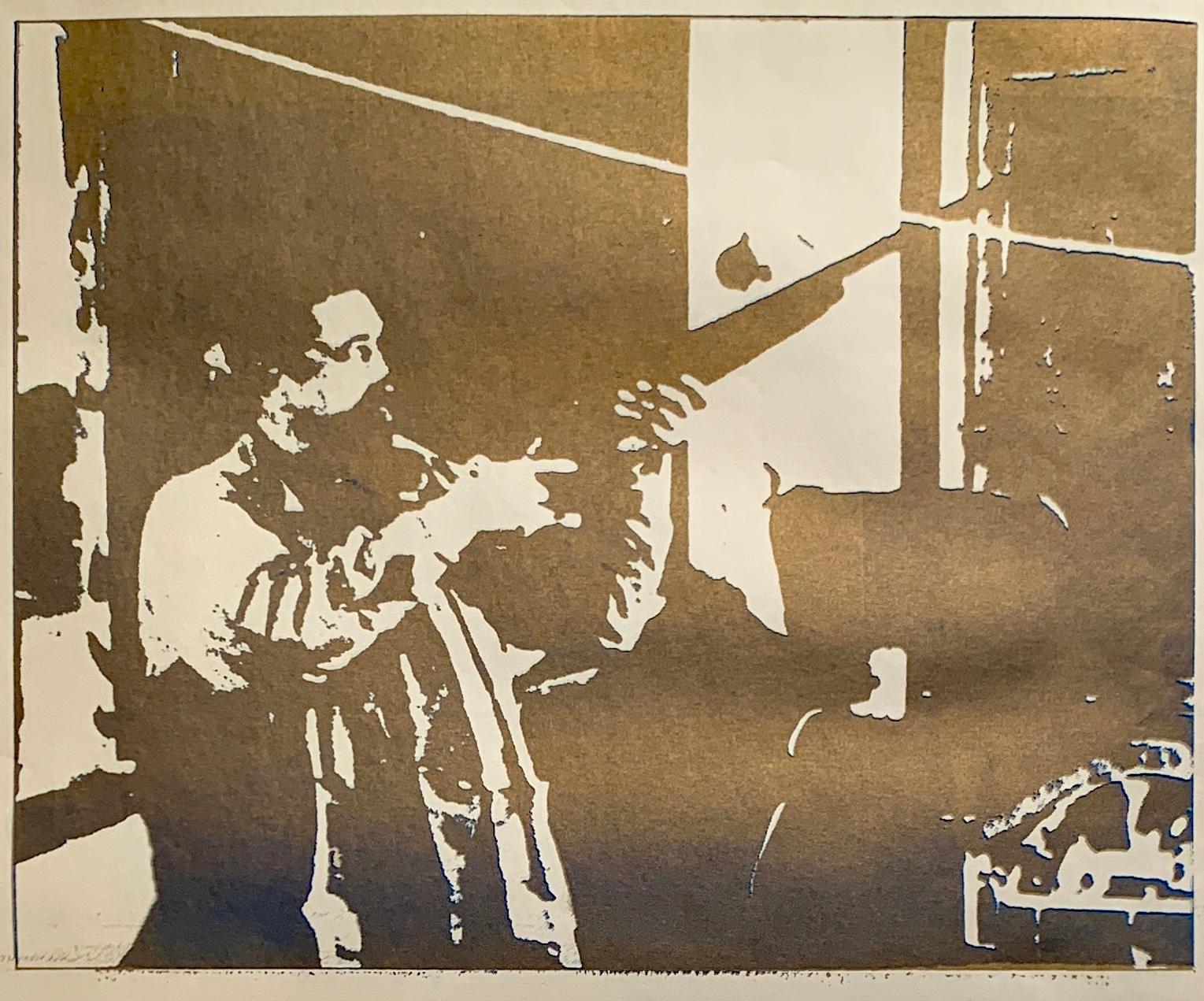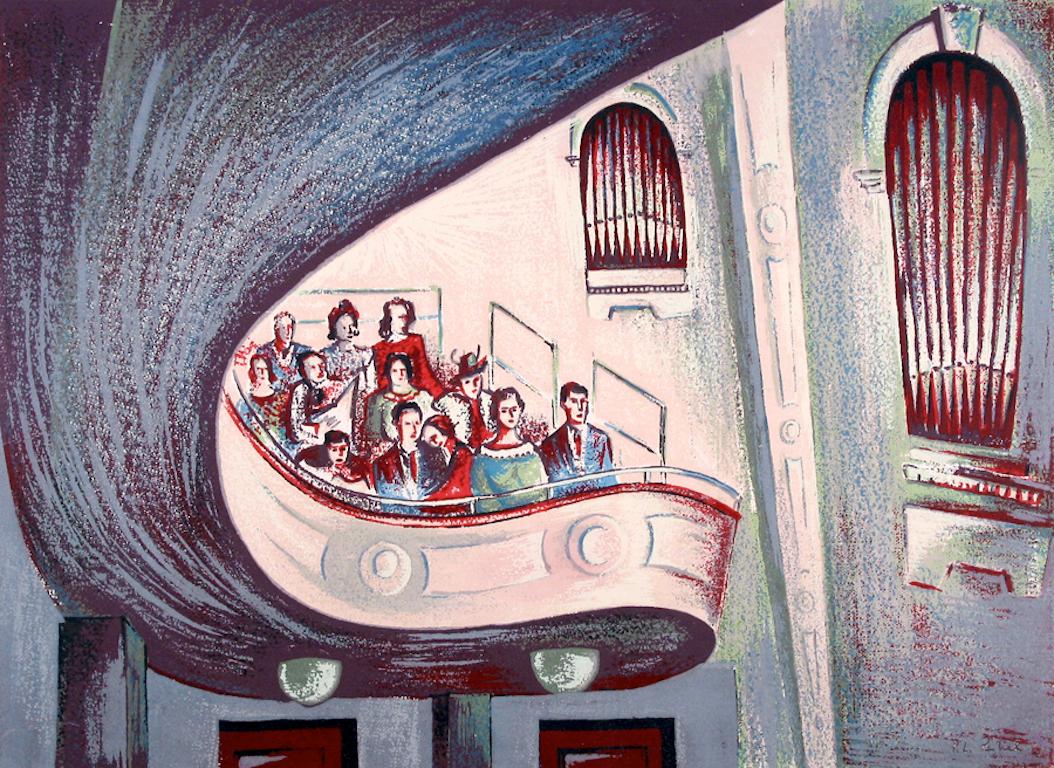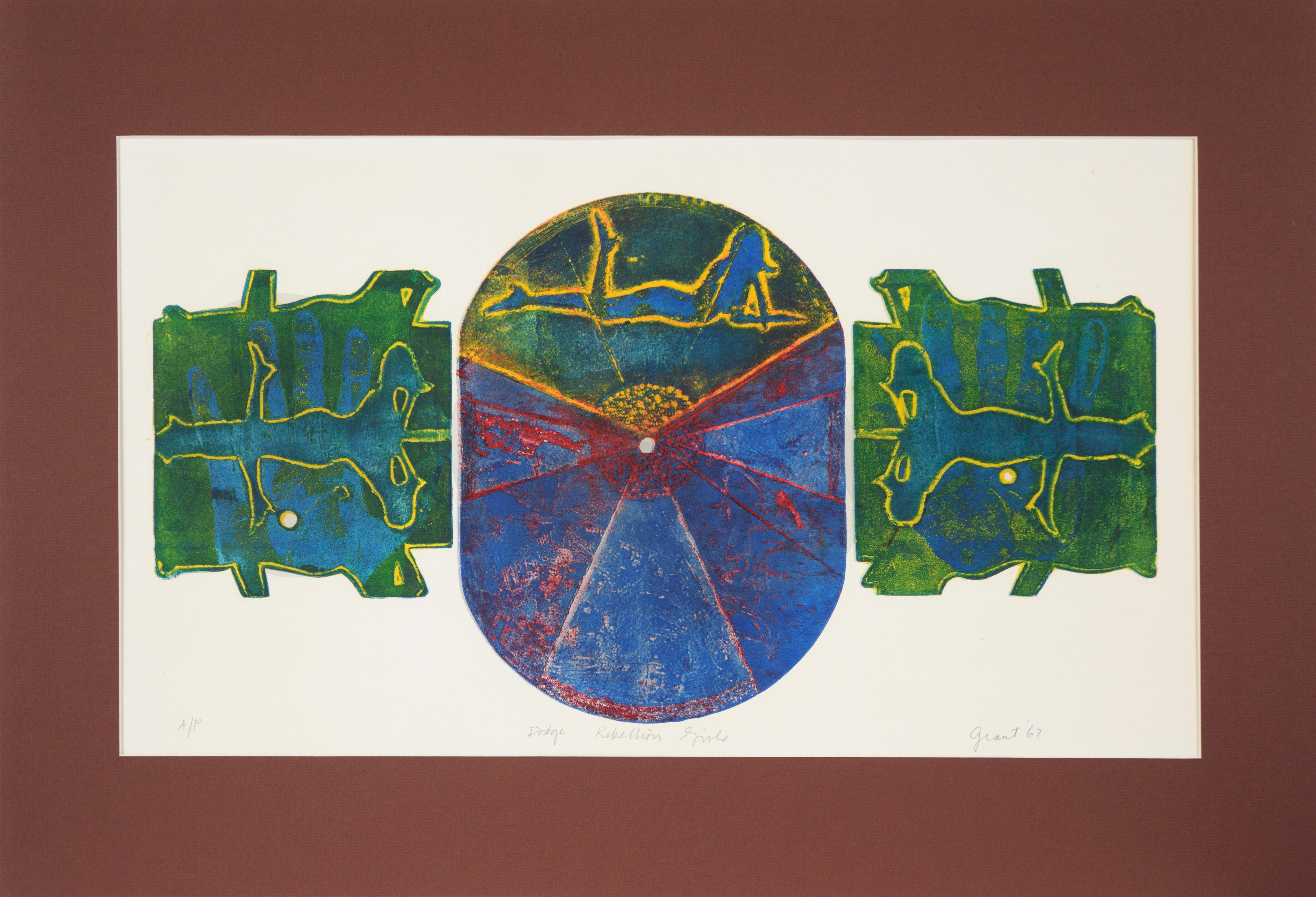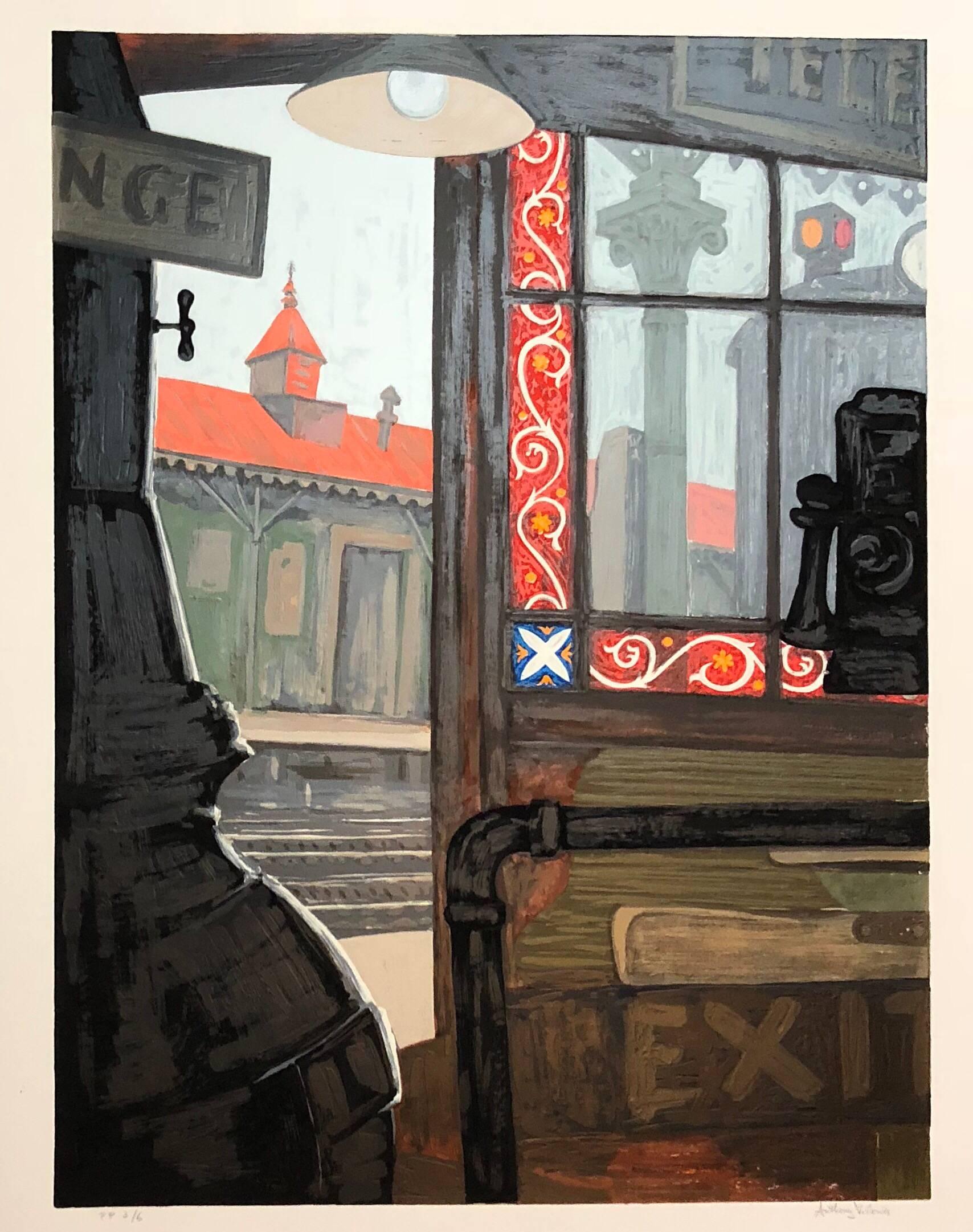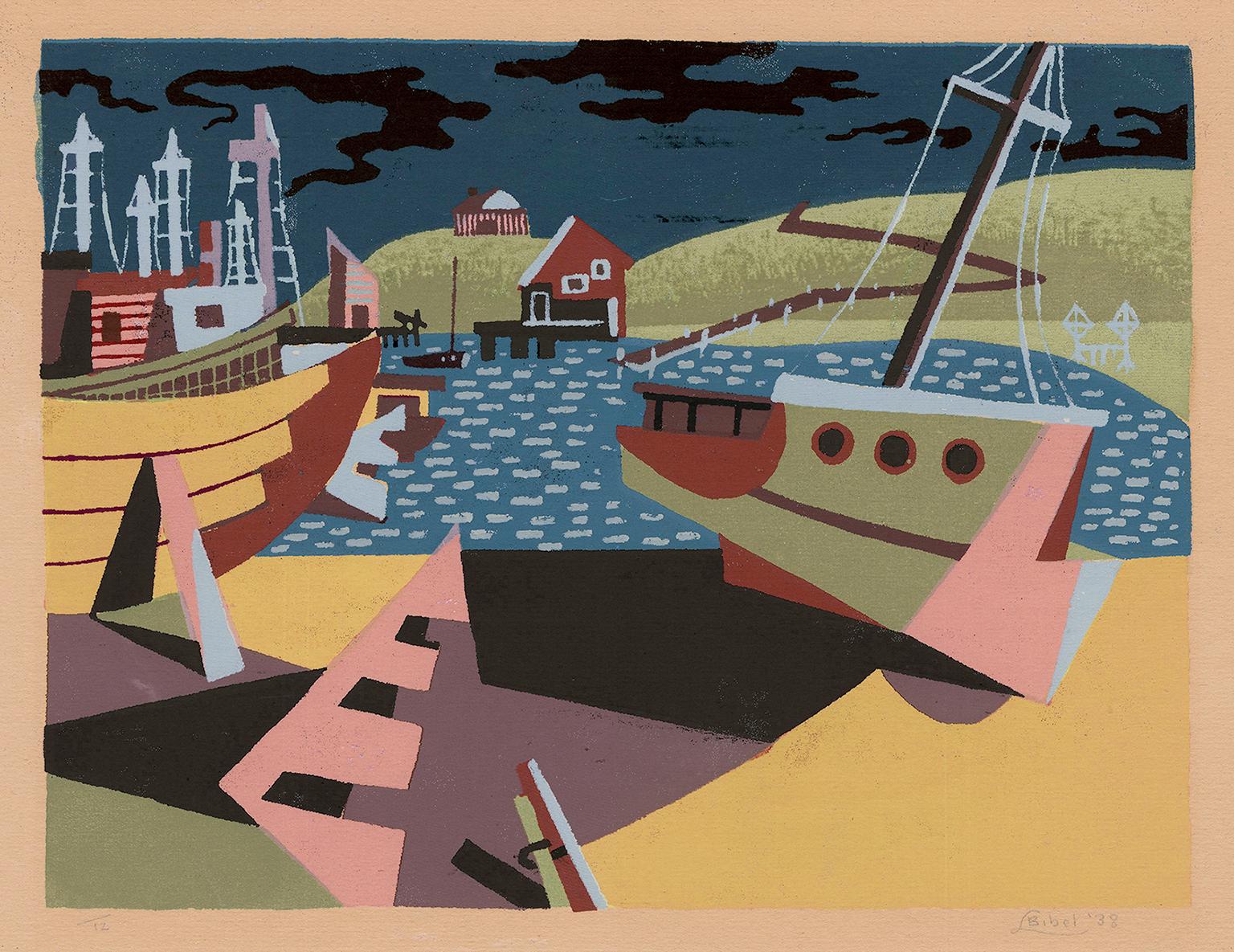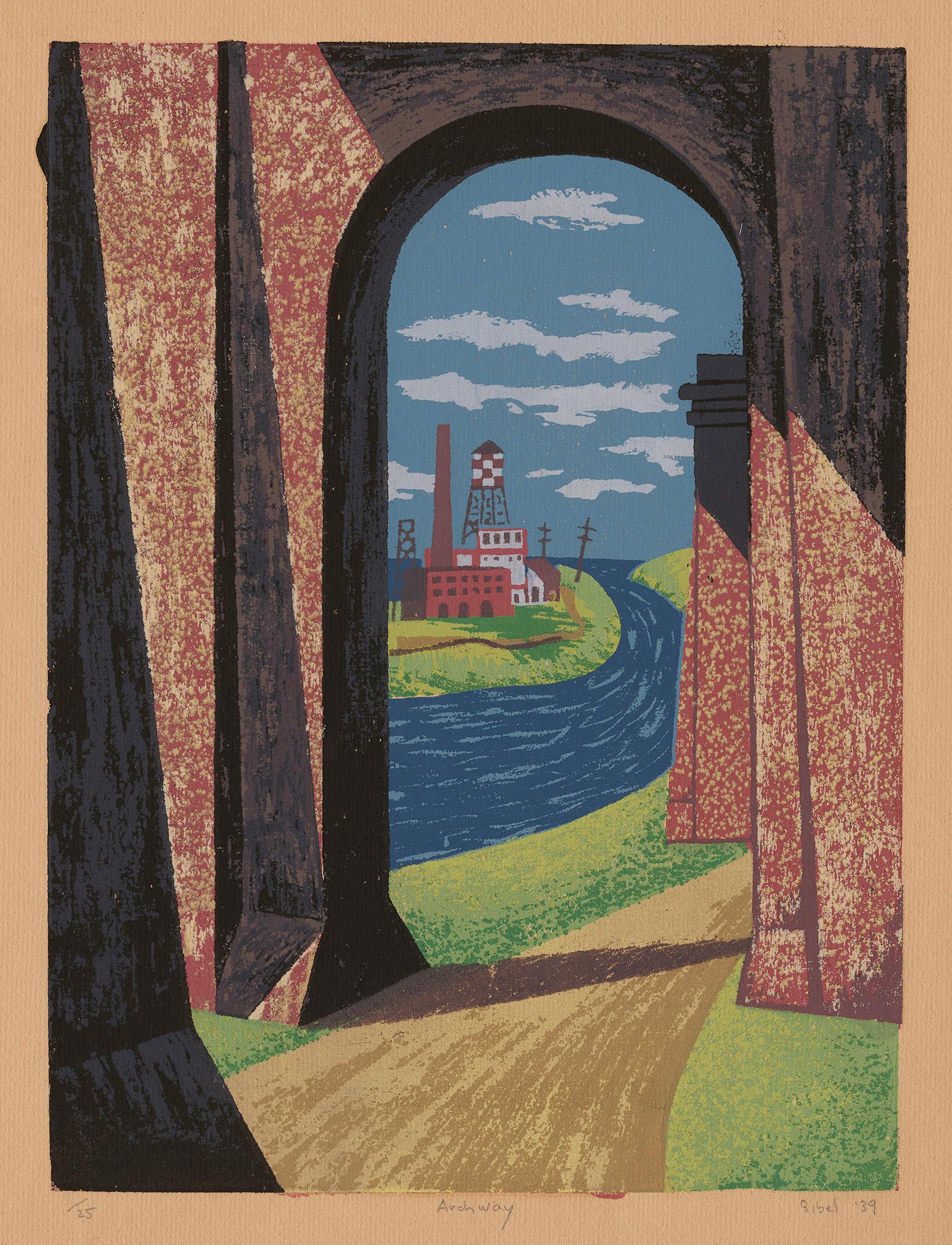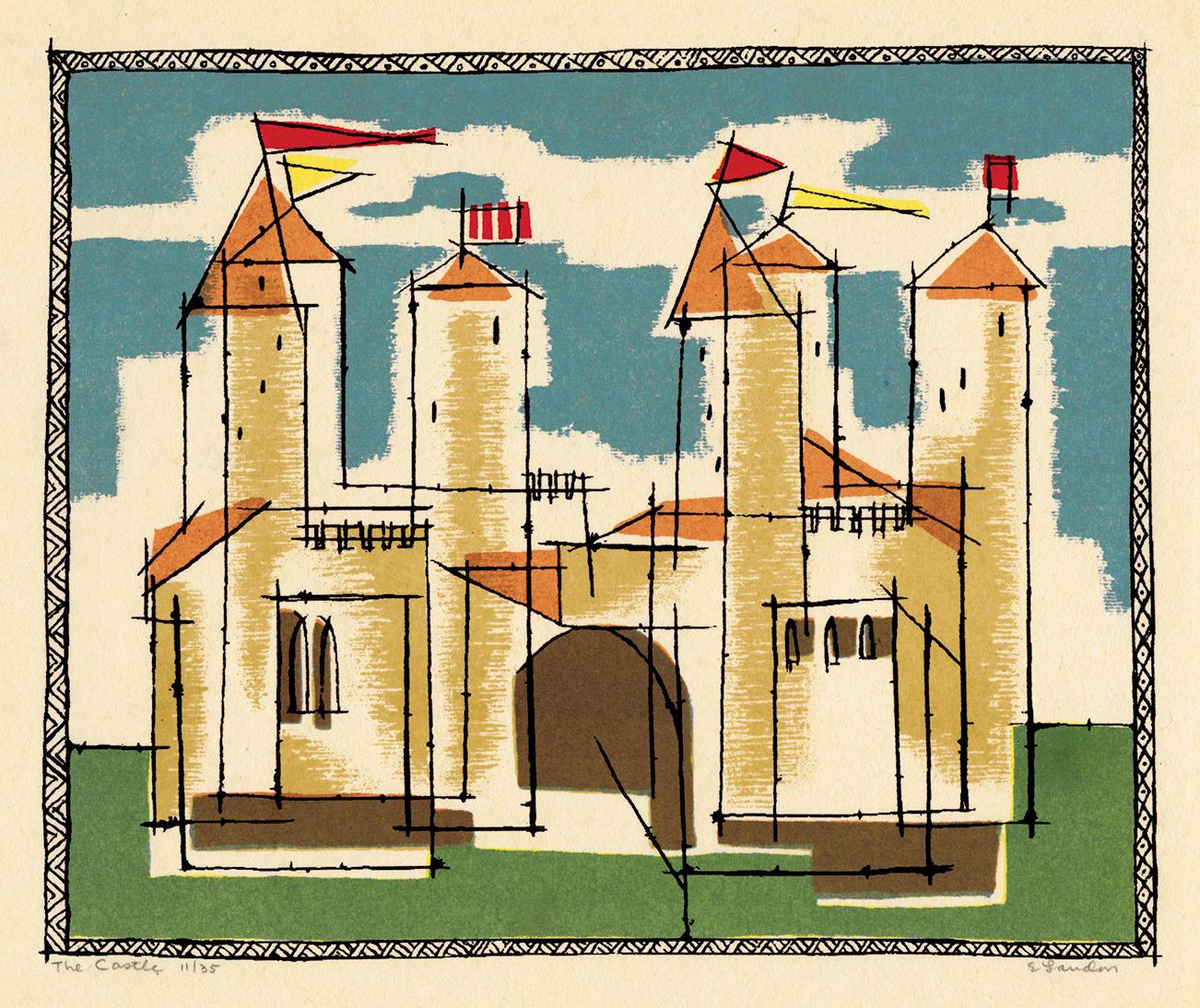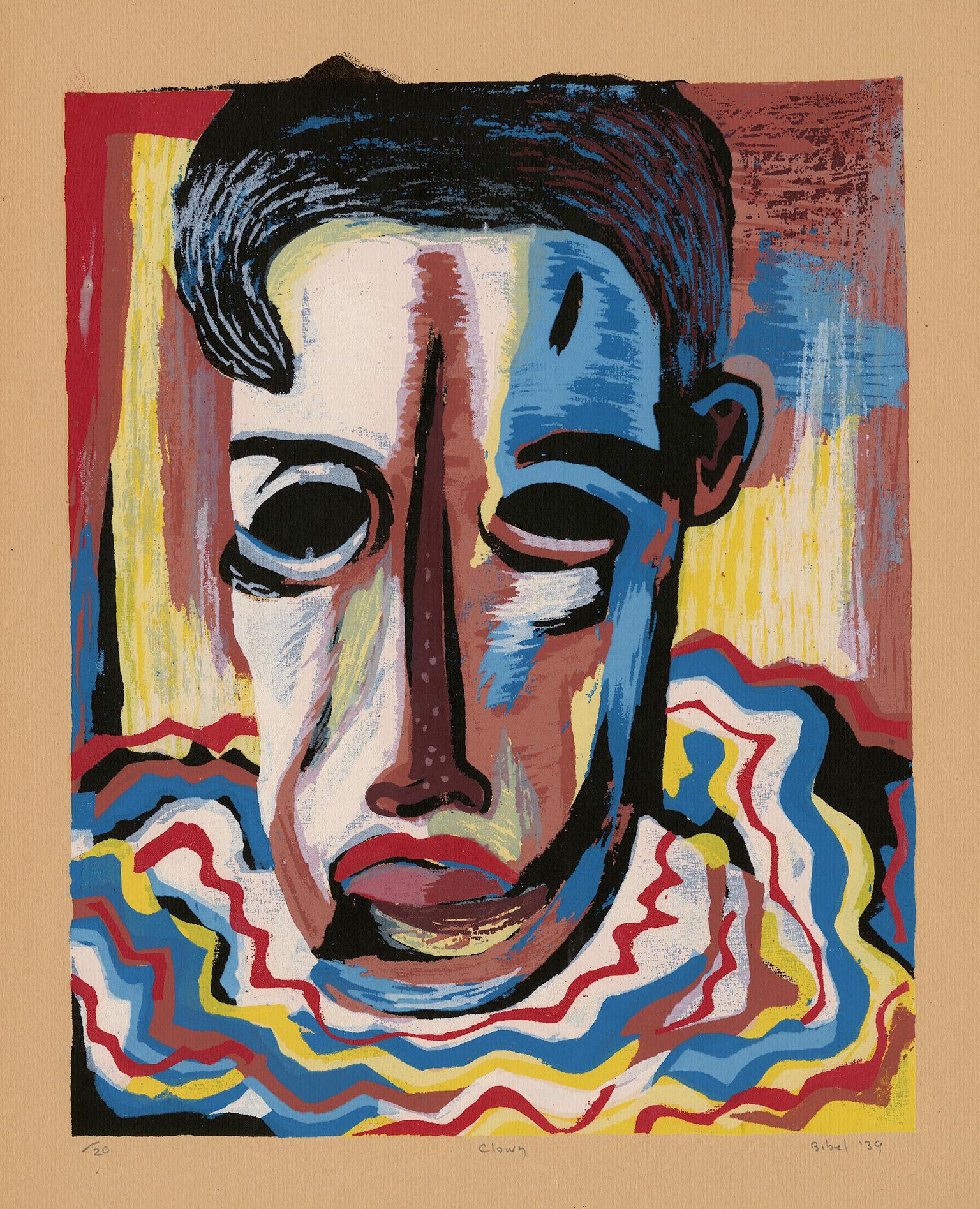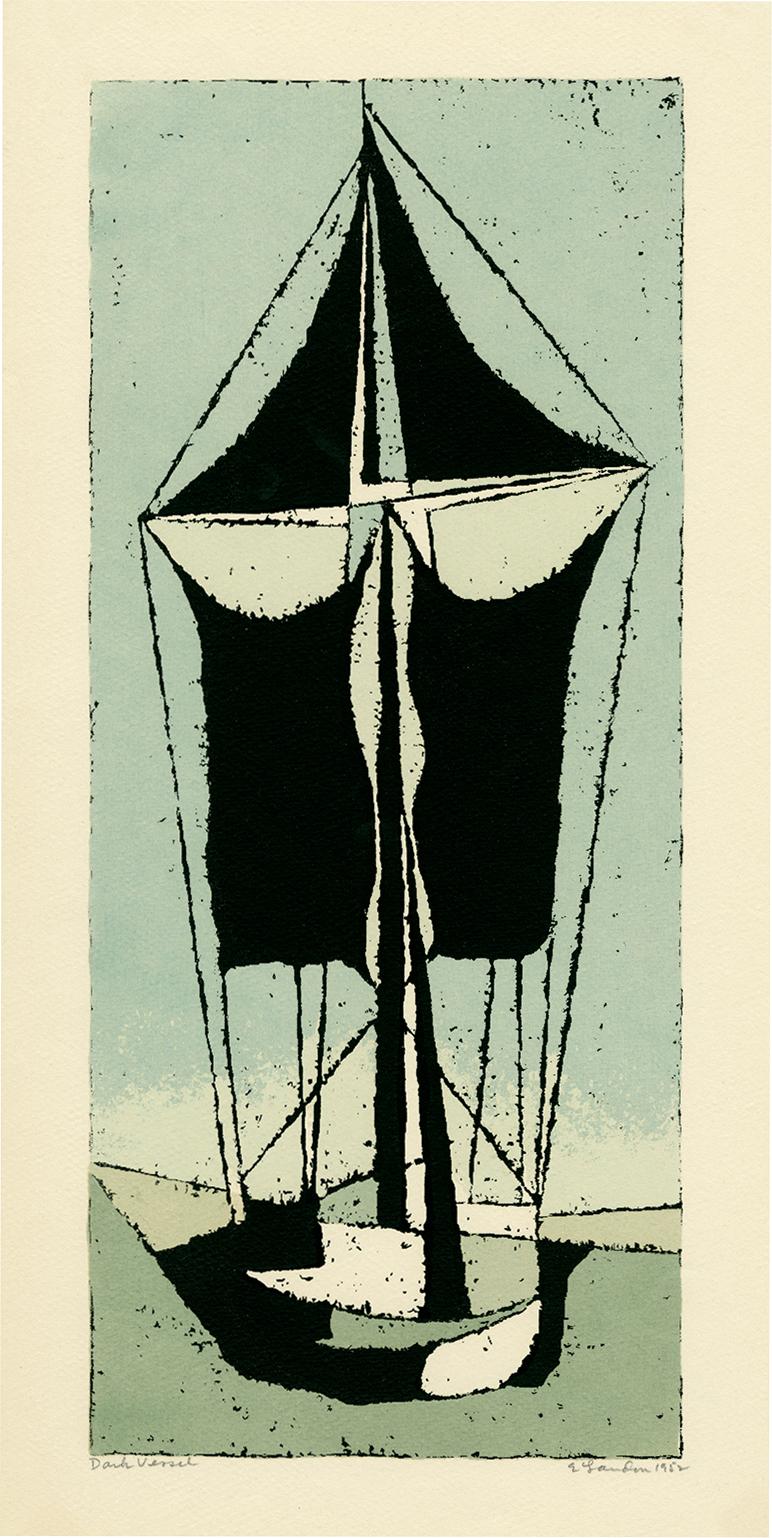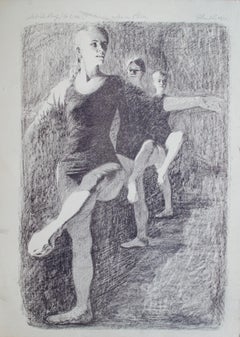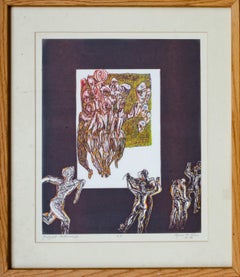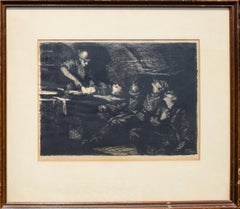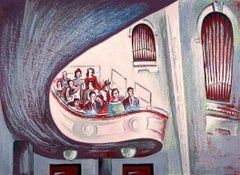
Hand Signed Will Barnet Print titled "Spring Morning", 1985
View Similar Items
Want more images or videos?
Request additional images or videos from the seller
1 of 8
Will BarnetHand Signed Will Barnet Print titled "Spring Morning", 19851985
1985
About the Item
- Creator:Will Barnet (1911, American)
- Creation Year:1985
- Dimensions:Height: 29 in (73.66 cm)Width: 53.5 in (135.89 cm)
- More Editions & Sizes:152 of 175Price: $3,250
- Medium:
- Movement & Style:
- Period:
- Condition:
- Gallery Location:Larchmont, NY
- Reference Number:1stDibs: LU2211211523782
Will Barnet
At the beginning of his career, Will Barnet was known for his figural depictions of domestic scenes. But, as he continued to stylistically develop, Barnet arrived at abstract geometric paintings far removed from his original career. A part of the Indian Space Painters group, Barnet was inspired by Native American art in creating these divergent images. Throughout his career, Barnet oscillated between representational and abstract paintings, never fully settling on one. He has received the National Medal of Arts in 2011, and his work has been displayed at the Whitney Museum of American Art, the Museum of Modern Art, and the Metropolitan Museum of Art.
About the Seller
5.0
Gold Seller
These expertly vetted sellers are highly rated and consistently exceed customer expectations.
1stDibs seller since 2022
41 sales on 1stDibs
Typical response time: 1 hour
More From This SellerView All
- Original Stan Phillips Lithograph of Ballerinas, c. 1970Located in Larchmont, NYStan Phillips (American, 1923-2012) Jacob's Pillow, c. 1970 Lithograph 14 7/8 x 10 7/8 in. Signed and inscribed Phillips was born in Brooklyn, New York and spent most of his young l...Category
1970s American Modern Figurative Prints
MaterialsLithograph
- Hand Colored Etching by WPA Artist Agnes Mills, 1982, UniqueLocated in Larchmont, NYAgnes Mills (American, 1915-2008) Guignol Intermezzo, 1982 Hand colored etching (UNIQUE) Sight: 13 3/4 x 11 1/4 in. Framed: 19 1/2 x 17 x 3/4 in. Titled lower right Inscribed "AP" bo...Category
1980s American Modern Figurative Prints
MaterialsEtching
- Samuel J. Woolf Antique Litho: First Aid Station at SeichepreyLocated in Larchmont, NYSamuel J. Woolf (American, 1880-1948) First Aid Station at Seicheprey Lithograph Sight: 11 x 14 1/2 in. Framed: 20 x 23 x 1 in. Signed lower right: S. J. Woolf Numbered lower left: 23/150 This print is based on Woolf 1918 oil painting: Front Line Dressing Station...Category
Early 20th Century American Modern Figurative Prints
MaterialsLithograph
- Norman Rockwell "Bottom Of The Sixth" SeriolithographBy Norman RockwellLocated in Larchmont, NYNorman Rockwell (American, 1894-1978) Bottom of The Sixth Original painting produced 1948, authorized postumous estate print produced 2005 Seriolithograph Sight: 20 1/4 x 19 in. Fram...Category
Early 2000s American Modern Figurative Prints
MaterialsLithograph
- Two Fine Prints from the David Suite by Edna Hibel, 1978By Edna HibelLocated in Larchmont, NYEdna Hibel (American, 1917-2015) Two Lithographs from the David Suite, 1978 Hand pulled original lithograph on Japanese rice paper Sheet: 26 x 20 in. Signed lower right: Hibel Number...Category
1970s Modern Figurative Prints
MaterialsRice Paper, Lithograph
- Sean Delonas Signed Political CartoonLocated in Larchmont, NYSean Delonas Untitled (sssuuuccckkkeeerrrsss), c. 21st century Screenprint (?) Sight: 9 1/2 x 12 3/4 in. Framed: 18 7/8 x 21 7/8 x 1 in. Signed and inscribed top Signed lower left in plate Best known as the cartoonist for the New York Post’s Page Six from 1990 to 2013. His cartoons are currently syndicated by CagleCartoons and appear worldwide. An award winning painter and illustrator, his work has appeared in the nation's largest newspapers, magazines, books, television and Broadway. Sean's work is in the permanent collections of the Smithsonian - National Museum of American History, the Library of Congress, Brooklyn Museum of Art, Newseum, the Cartoon Art Museum, New York Historical Society Museum and Library, the Billy Ireland Cartoon Library and Museum, appeared in shows at National Museum of Health and Medicine, the Norman Rockwell Museum, the Concord Museum and the Whitney Museum of American Art. Sean's cartoons were responsible for the New York Mets decision to boycott the press in 1992 (New York Daily News, 03/28/1993). In 2009, his cartoons led to worldwide media attention and the largest protest against the New York Post in it's 200+ yr history with many politicians calling for his arrest. Sean's cartoons linking Freddy Ferrer to Al Sharpton "helped decide the 2001 mayoral race" ( New York magazine, March 21-28, 2005) and were mentioned in the NYC Democrat mayoral candidate's concession speech (November 7, 2001). In 2018, New Mexico’s entire congressional delegation condemned Sean for an immigration cartoon based on Trump's State of the Union speech that appeared in the Albuquerque Journal. (New York Times, 02/08/18) A sold out one man art show at the Limner Gallery led to his largest commission -- creating the altar painting for the Church of St. Agnes in NYC. Many of his friends at the NY Post, were the models for this painting. Together with his son, is the author of Scuttle's Big Wish (ReganBooks/HarperCollins 2006 and Scholastic Books 2007) and, Sean Delonas: The Ones They Didn't Print, (Skyhorse Publishing, 2015). Pulitzer prize winner, Mike McAlary’s character, Scar [played by Glenn Fitzgerald], from CBS’s “New York News” was " drawn from that wacky talent, Sean Delonas." Mike McAlary, NEW YORK DAILY NEWS Wednesday, August 2, 1995. His work is in the private collections of celebrities, politicians, and other public figures, including George H.W. Bush, Secretary James Baker, Andrew Lloyd Weber, Rupert Murdoch, Howard Stern, George Steinbrenner, Spike Lee, Rush Limbaugh, Dan Rather, Wolf Blitzer, Steve Kroft, Mario Cuomo, John Cardinal O’Connor, Jackie Mason , Cindy Adams, Pete Hamill, David Blaine...Category
21st Century and Contemporary Contemporary More Prints
MaterialsScreen
You May Also Like
- "Gold and Blue Gun" 1970s Original Portrait SilkscreenLocated in Arp, TXArtist unknown "Gold and Blue Gun" c. 1970s Silkscreen on paper Image size 21.25"x17" paper size 26"x40" unframed $350 Unsigned *Listed price reflects custom framing selected by sell...Category
1970s American Modern Figurative Prints
MaterialsPaper, Screen
- "Balcony" 1938 WPA Print Mid 20th Century American Broadway Theatre ModernismBy Leon BibelLocated in New York, NY"Balcony" 1938 WPA Print Mid 20th Century American Broadway Theatre Modernism. Silk screen on paper, 15” x 20". Numbered 15/20 lower left. Pencil si...Category
1930s American Modern Figurative Prints
MaterialsPaper, Screen
$6,000 Sale Price20% Off - "The Capture, " Jacob Lawrence, Harlem Renaissance, Black Art, Haitian SeriesBy Jacob LawrenceLocated in New York, NYJacob Lawrence (1917 - 2000) The Capture of Marmelade (from The Life of Toussaint L'Ouverture series), 1987 Color screenprint on Bainbridge Two Ply Rag paper Sheet 32 1/8 x 22 1/16 inches Sight 29 3/4 x 19 1/4 inches A/P 1/30, aside from the edition of 120 Signed, titled, dated, inscribed "A/P" and numbered 1/30 in pencil, lower margin. Literature: Nesbett L87-2. A social realist, Lawrence documented the African American experience in several series devoted to Toussaint L’Ouverture, Frederick Douglass, Harriet Tubman, life in Harlem, and the civil rights movement of the 1960s. He was one of the first nationally recognized African American artists. “If at times my productions do not express the conventionally beautiful, there is always an effort to express the universal beauty of man’s continuous struggle to lift his social position and to add dimension to his spiritual being.” — Jacob Lawrence quoted in Ellen Harkins Wheat, Jacob Lawrence: The Frederick Douglass and Harriet Tubman Series of 1938 – 40. The most widely acclaimed African American artist of this century, and one of only several whose works are included in standard survey books on American art, Jacob Lawrence has enjoyed a successful career for more than fifty years. Lawrence’s paintings portray the lives and struggles of African Americans, and have found wide audiences due to their abstract, colorful style and universality of subject matter. By the time he was thirty years old, Lawrence had been labeled as the “foremost Negro artist,” and since that time his career has been a series of extraordinary accomplishments. Moreover, Lawrence is one of the few painters of his generation who grew up in a black community, was taught primarily by black artists, and was influenced by black people. Lawrence was born on September 7, 1917,* in Atlantic City, New Jersey. He was the eldest child of Jacob and Rosa Lee Lawrence. The senior Lawrence worked as a railroad cook and in 1919 moved his family to Easton, Pennsylvania, where he sought work as a coal miner. Lawrence’s parents separated when he was seven, and in 1924 his mother moved her children first to Philadelphia and then to Harlem when Jacob was twelve years old. He enrolled in Public School 89 located at 135th Street and Lenox Avenue, and at the Utopia Children’s Center, a settlement house that provided an after school program in arts and crafts for Harlem children. The center was operated at that time by painter Charles Alston who immediately recognized young Lawrence’s talents. Shortly after he began attending classes at Utopia Children’s Center, Lawrence developed an interest in drawing simple geometric patterns and making diorama type paintings from corrugated cardboard boxes. Following his graduation from P.S. 89, Lawrence enrolled in Commerce High School on West 65th Street and painted intermittently on his own. As the Depression became more acute, Lawrence’s mother lost her job and the family had to go on welfare. Lawrence dropped out of high school before his junior year to find odd jobs to help support his family. He enrolled in the Civilian Conservation Corps, a New Deal jobs program, and was sent to upstate New York. There he planted trees, drained swamps, and built dams. When Lawrence returned to Harlem he became associated with the Harlem Community Art Center directed by sculptor Augusta Savage, and began painting his earliest Harlem scenes. Lawrence enjoyed playing pool at the Harlem Y.M.C.A., where he met “Professor” Seifert, a black, self styled lecturer and historian who had collected a large library of African and African American literature. Seifert encouraged Lawrence to visit the Schomburg Library in Harlem to read everything he could about African and African American culture. He also invited Lawrence to use his personal library, and to visit the Museum of Modern Art’s exhibition of African art in 1935. As the Depression continued, circumstances remained financially difficult for Lawrence and his family. Through the persistence of Augusta Savage, Lawrence was assigned to an easel project with the W.P.A., and still under the influence of Seifert, Lawrence became interested in the life of Toussaint L’Ouverture, the black revolutionary and founder of the Republic of Haiti. Lawrence felt that a single painting would not depict L’Ouverture’s numerous achievements, and decided to produce a series of paintings on the general’s life. Lawrence is known primarily for his series of panels on the lives of important African Americans in history and scenes of African American life. His series of paintings include: The Life of Toussaint L’Ouverture, 1937, (forty one panels), The Life of Frederick Douglass, 1938, (forty panels), The Life of Harriet Tubman, 1939, (thirty one panels), The Migration of the Negro,1940 – 41, (sixty panels), The Life of John Brown, 1941, (twenty two panels), Harlem, 1942, (thirty panels), War, 1946 47, (fourteen panels), The South, 1947, (ten panels), Hospital, 1949 – 50, (eleven panels), Struggle: History of the American People, 1953 – 55, (thirty panels completed, sixty projected). Lawrence’s best known series is The Migration of the Negro, executed in 1940 and 1941. The panels portray the migration of over a million African Americans from the South to industrial cities in the North between 1910 and 1940. These panels, as well as others by Lawrence, are linked together by descriptive phrases, color, and design. In November 1941 Lawrence’s Migration series was exhibited at the prestigious Downtown Gallery in New York. This show received wide acclaim, and at the age of twenty four Lawrence became the first African American artist to be represented by a downtown “mainstream” gallery. During the same month Fortune magazine published a lengthy article about Lawrence, and illustrated twenty six of the series’ sixty panels. In 1943 the Downtown Gallery exhibited Lawrence’s Harlem series, which was lauded by some critics as being even more successful than the Migration panels. In 1937 Lawrence obtained a scholarship to the American Artists School in New York. At about the same time, he was also the recipient of a Rosenwald Grant for three consecutive years. In 1943 Lawrence joined the U.S. Coast Guard and was assigned to troop ships that sailed to Italy and India. After his discharge in 1945, Lawrence returned to painting the history of African American people. In the summer of 1947 Lawrence taught at the innovative Black Mountain College in North Carolina at the invitation of painter Josef Albers. During the late 1940s Lawrence was the most celebrated African American painter in America. Young, gifted, and personable, Lawrence presented the image of the black artist who had truly “arrived”. Lawrence was, however, somewhat overwhelmed by his own success, and deeply concerned that some of his equally talented black artist friends had not achieved a similar success. As a consequence, Lawrence became deeply depressed, and in July 1949 voluntarily entered Hillside Hospital in Queens, New York, to receive treatment. He completed the Hospital series while at Hillside. Following his discharge from the hospital in 1950, Lawrence resumed painting with renewed enthusiasm. In 1960 he was honored with a retrospective exhibition and monograph prepared by The American Federation of Arts. He also traveled to Africa twice during the 1960s and lived primarily in Nigeria. Lawrence taught for a number of years at the Art Students League in New York, and over the years has also served on the faculties of Brandeis University, the New School for Social Research, California State College at Hayward, the Pratt Institute, and the University of Washington, Seattle, where he is currently Professor Emeritus of Art. In 1974 the Whitney Museum of American Art in New York held a major retrospective of Lawrence’s work that toured nationally, and in December 1983 Lawrence was elected to the American Academy of Arts and Letters. The most recent retrospective of Lawrence’s paintings was organized by the Metropolitan Museum of Art in 2020, and was accompanied by a major catalogue. Lawrence met his wife Gwendolyn Knight...Category
1970s American Modern Figurative Prints
MaterialsScreen, Paper
$10,000 Sale Price20% Off - "Dodge Rebellion Girls" - 1967 Original Silkscreen on Paper Artists ProofBy Marc Foster GrantLocated in Soquel, CA"Dodge Rebellion Girls" - 1967 Silkscreen on Paper 1967 color silkscreen depicting the Dodge Rebellion Girls by Marc Foster Grant (American, b. 1947). A silhouette of the 'dodge gi...Category
1960s American Modern Figurative Prints
MaterialsPaper, Ink, Screen
- Modernist Silkscreen Screenprint 'El Station, Interior' NYC Subway, WPA ArtistBy Anthony VelonisLocated in Surfside, FLscreenprint printed in color ink on wove paper. New York City subway station interior. Anthony Velonis (1911 – 1997) was an American painter and designer born in New York City who helped introduce the public to silkscreen printing in the early 20th century. While employed under the federal Works Progress Administration, WPA during the Great Depression, Velonis brought the use of silkscreen printing as a fine art form, referred to as the "serigraph," into the mainstream. By his own request, he was not publicly credited for coining the term. He experimented and mastered techniques to print on a wide variety of materials, such as glass, plastics, and metal, thereby expanding the field. In the mid to late 20th century, the silkscreen technique became popular among other artists such as Robert Rauschenberg and Andy Warhol. Velonis was born into a relatively poor background of a Greek immigrant family and grew up in the tenements of New York City. Early on, he took creative inspiration from figures in his life such as his grandfather, an immigrant from the mountains in Greece, who was "an ecclesiastical painter, on Byzantine style." Velonis attended James Monroe High School in The Bronx, where he took on minor artistic roles such as the illustration of his high school yearbook. He eventually received a scholarship to the NYU College of Fine Arts, into which he was both surprised and ecstatic to have been admitted. Around this time he took to painting, watercolor, and sculpture, as well as various other art forms, hoping to find a niche that fit. He attended NYU until 1929, when the Great Depression started in the United States after the stock market crash. Around the year 1932, Velonis became interested in silk screen, together with fellow artist Fritz Brosius, and decided to investigate the practice. Working in his brother's sign shop, Velonis was able to master the silkscreen process. He reminisced in an interview three decades later that doing so was "plenty of fun," and that a lot of technology can be discovered through hard work, more so if it is worked on "little by little." Velonis was hired by Mayor LaGuardia in 1934 to promote the work of New York's city government via posters publicizing city projects. One such project required him to go on a commercial fishing trip to locations including New Bedford and Nantucket for a fortnight, where he primarily took photographs and notes, and made sketches. Afterward, for a period of roughly six months, he was occupied with creating paintings from these records. During this trip, Velonis developed true respect and affinity for the fishermen with whom he traveled, "the relatively uneducated person," in his words. Following this, Velonis began work with the Public Works of Art Project (PWAP), an offshoot of the Civil Works Administration (CWA), where he was assigned to serve the different city departments of New York. After the formation of the federal Works Progress Administration, which hired artists and sponsored projects in the arts, he also worked in theater. Velonis began working for the federal WPA in 1935. He kept this position until 1936 or 1938, at which point he began working in the graphic art division of the Federal Art Project, which he ultimately led. Under various elements of the WPA program, many young artists, writers and actors gained employment that helped them survive during the Depression, as well as contributing works that created an artistic legacy for the country. When interviewed in December 1994 by the Library of Congress about his time in the WPA, Velonis reflected that he had greatly enjoyed that period, saying that he liked the "excitement" and "meeting all the other artists with different points of view." He also said in a later interview that "the contact and the dialogue with all those artists and the work that took place was just invaluable." Among the young artists he hired was Edmond Casarella, who later developed an innovative technique using layered cardboard for woodcuts. Velonis introduced silkscreen printing to the Poster Division of the WPA. As he recalled in a 1965 interview: "I suggested that the Poster division would be a lot more productive and useful if they had an auxiliary screen printing project that worked along with them. And apparently this was very favorably received..." As a member of the Federal Art Project, a subdivision of the WPA, Velonis later approached the Public Use of Arts Committee (PUAC) for help in "propagandizing for art in the parks, in the subways, et cetera." Since the Federal Art Project could not be "self-promoting," an outside organization was required to advertise their art more extensively. During his employment with the Federal Art Project, Velonis created nine silkscreen posters for the federal government. Around 1937-1939 Velonis wrote a pamphlet titled "Technical Problems of the Artist: Technique of the Silkscreen Process," which was distributed to art centers run by the WPA around the country. It was considered very influential in encouraging artists to try this relatively inexpensive technique and stimulated printmaking across the country. In 1939, Velonis founded the Creative Printmakers Group, along with three others, including Hyman Warsager. They printed both their own works and those of other artists in their facility. This was considered the most important silkscreen shop of the period. The next year, Velonis founded the National Serigraph Society. It started out with relatively small commercial projects, such as "rather fancy" Christmas cards that were sold to many of the upscale Fifth Avenue shops...Category
1980s American Modern Figurative Prints
MaterialsScreen
- 1970s Pop Art "Dancing Lessons #2" Silver Silkscreen Mod Ballet Girl PrintBy Joanne SeltzerLocated in Surfside, FLPrinted on a slightly reflective metallic silver finished paper. there is a companion piece on a money green paper. A depiction of a ballet dancer, superimposed upon canceled dance c...Category
1970s American Modern Portrait Prints
MaterialsScreen
Recently Viewed
View AllMore Ways To Browse
New York 1928 Print
Multiples Native American
American Indian Prints
Prints Of American Indians
Retro Space Theme
Screen Print On Glass
Vintage Indian Art Prints
American Indian Art Prints
Vintage American Indian Prints
Social Realism Print
Indian Screens
Rectangle Vintage Frames
Native American Indian Prints
Boston Cooper
American Indian Figure
Native American Etchings
American Indian Figurative Prints
Will Cooper
